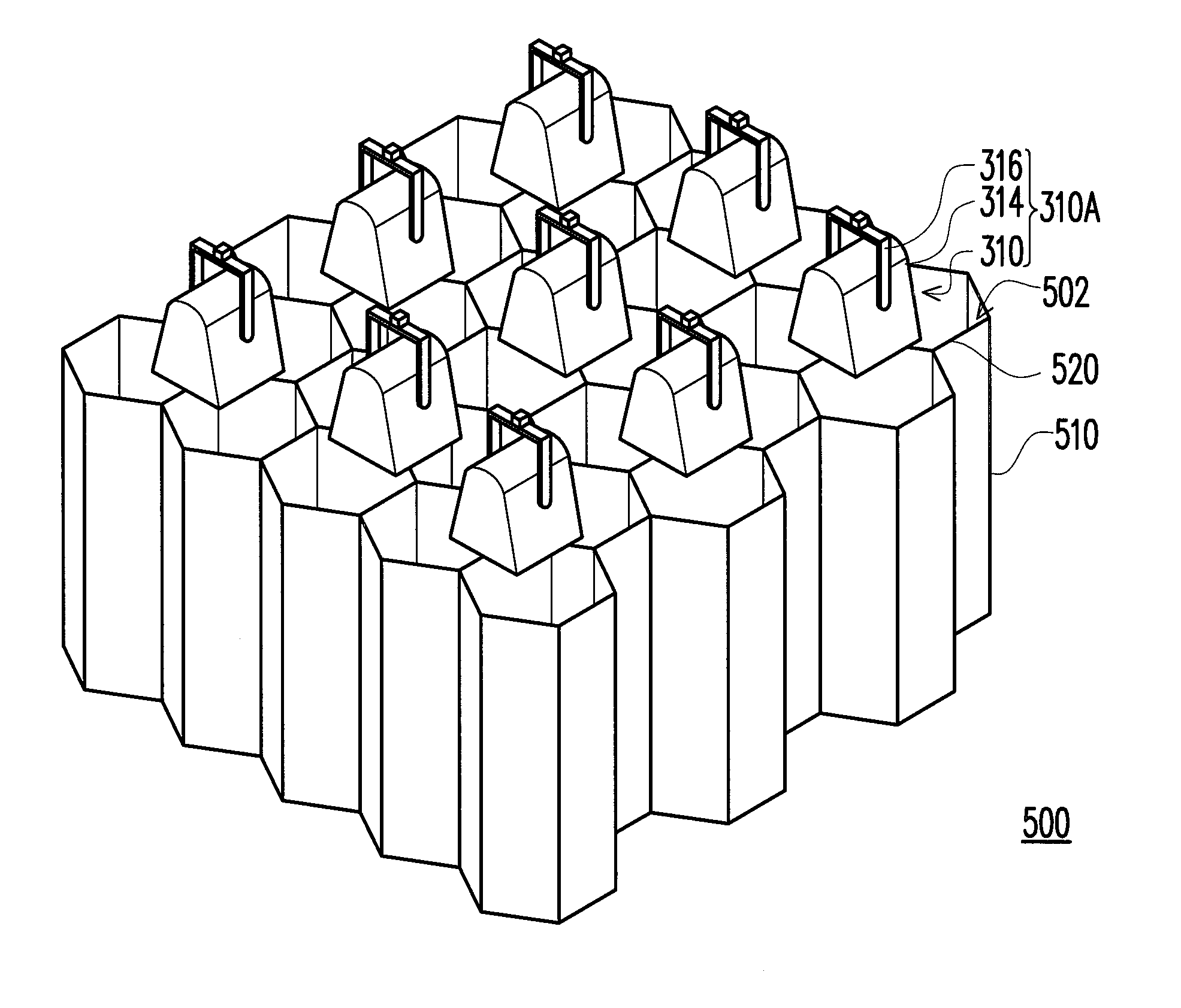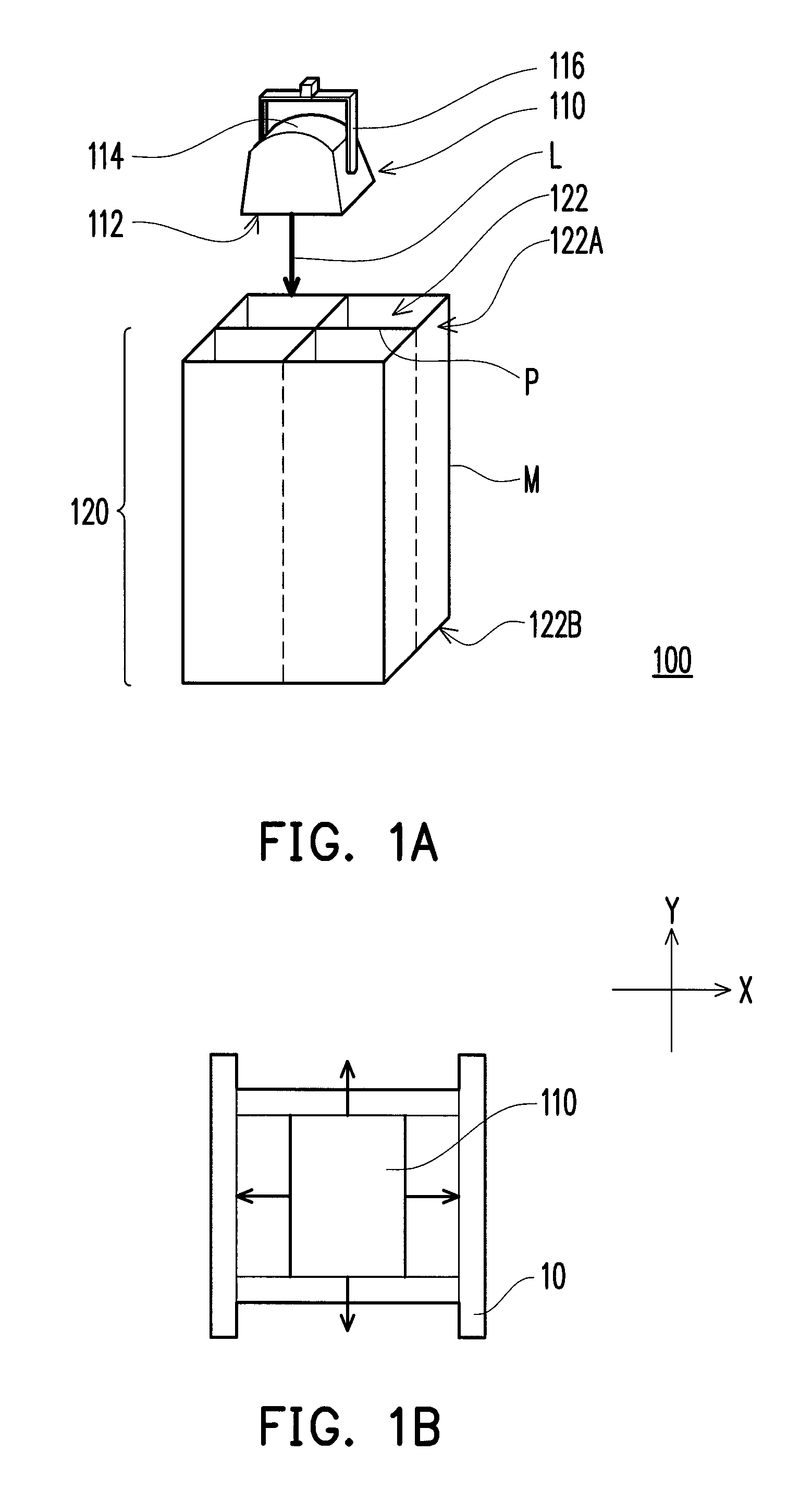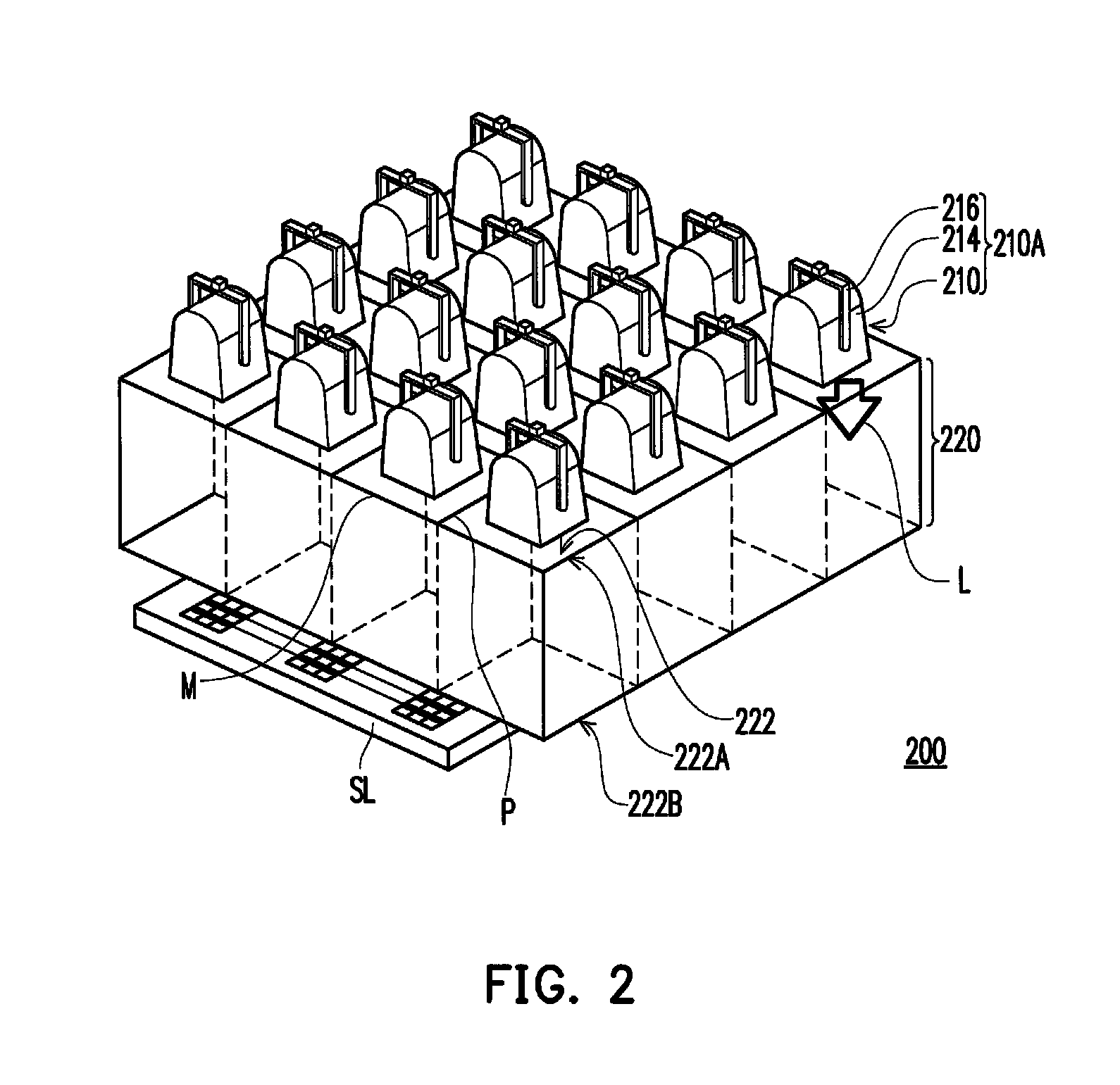Solar simulator
a solar simulator and simulator technology, applied in the field of optical systems, can solve the problems of difficult maintenance, difficult to efficiently reduce the non-uniform and difficult to properly control or adjust the distribution of ray radiation, so as to achieve better uniformity of irradiance on the test plane
- Summary
- Abstract
- Description
- Claims
- Application Information
AI Technical Summary
Benefits of technology
Problems solved by technology
Method used
Image
Examples
first embodiment
[0022]FIG. 1A is a schematic view of a solar simulator according to the present disclosure. Referring to FIG. 1A, a solar simulator 100 includes a light source 110 and a light conduit array 120. The light source 110 has a light emitting surface 112 and is used for emitting a beam of ray radiation L. The light conduit array 120 includes a plurality of light conduits 122 closely adjacent to one another and is configured in a light path of the ray radiation L. Each of the light conduits 122 has an inner reflecting surface P reflecting the ray radiation therein, a light input side 122A, and a light output side 122B opposite to the light input side 122A. The ray radiation L enters the light conduits 122 through the light input side 122A and emitting from the light output side 122B so as to provide the required simulated solar light. That is to say, the light input side 122A are relatively closer to the light emitting surface 112 and the light output side 122B are relatively farther from ...
third embodiment
[0035]FIG. 3A is a schematic view of a solar simulator according to the present disclosure. Referring to FIG. 3A, a solar simulator 300 including a plurality of light sources 310 and a light conduit array 320, wherein each of the light light sources 310 is used for emitting a ray radiation L from the light emitting surface 312 and the light conduit array 320 includes a plurality of light conduits 322. In specific, the light sources 310 construct a light source array 310A, for example. Each of the light conduit 322 configured in the light path of the ray radiation L has an inner reflecting surface P reflecting the ray radiation L, a light input side 322A, and a light output side 322B. The light input side 322A are relatively closer to the light emitting surface 312 and the light output side 322B are relatively farther from the light emitting surface 312 such that the light emitting surface 312 faces the light input side 322A. In the present embodiment, the light source 310 can includ...
second embodiment
[0036]Specifically, the difference between the present embodiment and the second embodiment mainly lies in that each of the light sources 310 in the present embodiment corresponds to a plurality of the light conduits 322. Each light source 310 in the present embodiment corresponds, for example, to four light conduits 322 so that the number of the light sources 310 is less than that of the light conduits 322. Furthermore, each light source 310 can be located corresponding to the center of the area defined by four closely adjacent light conduits 322, i.e. the light conduit array 320 parcels out the ray radiation L emitted from each light source 310 to the corresponding four light conduits 322, but it is not intended to limit the disclosure. In addition, each of the light conduits 322 can be respectively in the shape of a polygonal column, for example. In the present embodiment, the light conduits 322 are exemplarily in the shape of a quadrilateral column, for example, but the present ...
PUM
 Login to View More
Login to View More Abstract
Description
Claims
Application Information
 Login to View More
Login to View More - R&D
- Intellectual Property
- Life Sciences
- Materials
- Tech Scout
- Unparalleled Data Quality
- Higher Quality Content
- 60% Fewer Hallucinations
Browse by: Latest US Patents, China's latest patents, Technical Efficacy Thesaurus, Application Domain, Technology Topic, Popular Technical Reports.
© 2025 PatSnap. All rights reserved.Legal|Privacy policy|Modern Slavery Act Transparency Statement|Sitemap|About US| Contact US: help@patsnap.com



